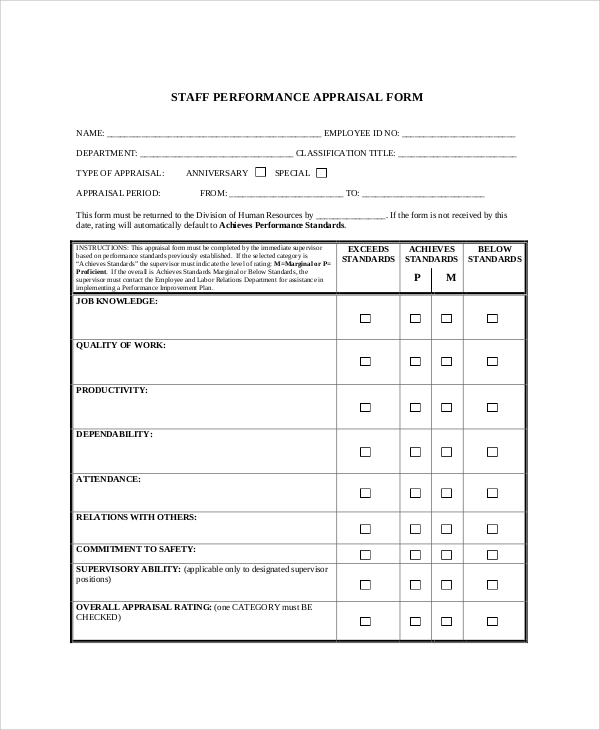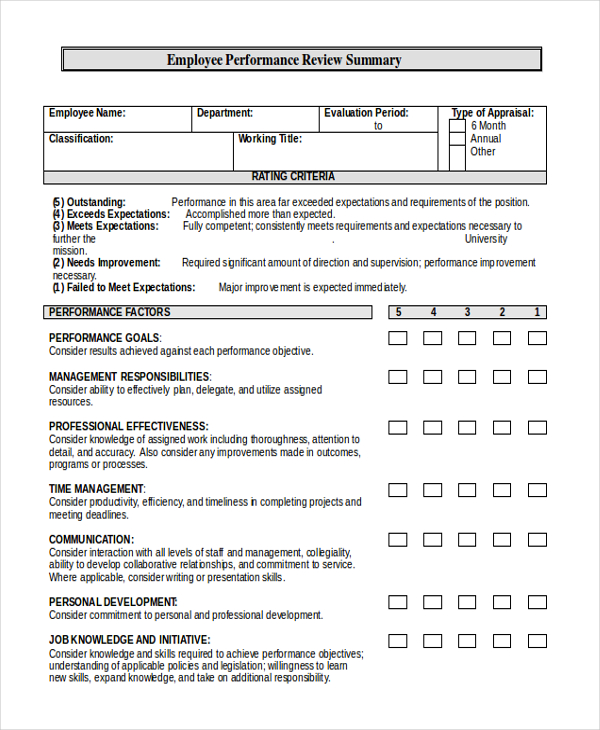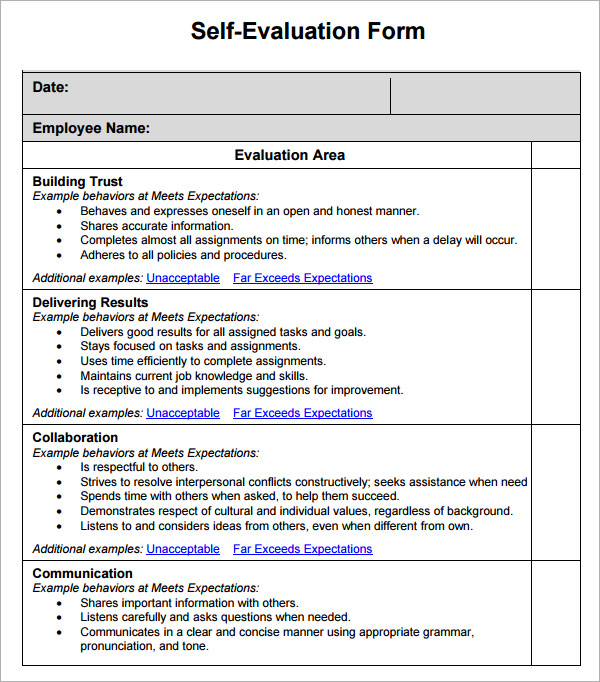


This criterion is used to assess an employee’s attendance record and punctuality. It may include technical skills, problem-solving abilities, and learning new tasks and technologies. This criterion evaluates an employee’s skills that are relevant to their job. This can be reviewed through assessments of the employee’s technical skills, understanding of procedures, and ability to apply their knowledge to their work.

This criterion assesses the employee’s level of expertise and understanding of their job responsibilities. It may include productivity, efficiency, and the ability to meet deadlines. This refers to the amount of work an employee can produce in a given period. It includes factors such as accuracy, attention to detail, and completeness. This criterion is used to assess the overall level of excellence in an employee’s work. The following methods can be used to track an employee’s performance on their job. This can be useful for making objective decisions about promotions, pay raises, and other employment-related matters. Performance evaluations provide a record of an employee’s job performance. This helps employees focus on top priorities and improve their performance. Performance review provides an opportunity to assess progress towards set goals. Identifying development needs and offering training and support to employees helps ensure the organization’s success. Performance reviews are a great way to identify areas where an employee may need additional training or support. This improves communication between both parties. Performance reviews allow employees and employers to discuss job performance, goals, and expectations. By identifying and addressing any areas of weakness or inefficiency, an organization can improve overall productivity and efficiency, leading to increased profitability and success. Improve overall productivityĮvaluating employee performance can help an organization meet its goals and objectives. This will help boost employee morale and motivate employees to excel in their jobs. Top performers get rewards of salary increases, promotions, or other forms of recognition. Performance reviews are a great way to recognize top performers and commend them for their hard work and contributions to the organization. This can be particularly important in a fast-paced or rapidly changing work environment, where new skills may be required regularly. Performance evaluation helps employers identify areas where employees may need additional training or support. Regularly reviewing and evaluating employee performance makes it easier to identify any skills gaps or areas where an employee may be struggling. During the performance review, the manager assesses the employee’s skills and abilities over time. Performance review is vital for any organization looking to optimize its operations and drive success. The process aims to identify employee strengths and weaknesses and provide feedback and support for improvement.

Performance review is the comprehensive assessment of an employee’s job performance against predetermined criteria. This article highlights overarching criteria to use in your employee performance evaluations. Knowing the specific performance review criteria to use during the evaluation makes the process easier. However, there are critical criteria you should use in appraising your employee’s performance. Performance review criteria may vary based on the objectives of a business. It also provides a baseline on which your employees can improve. However, basing your assessment on specific performance review criteria is the only way to make the process effective. It’s a great way to assess successes, achievements, and areas for improvement. Performance reviews are an effective way to gauge job performance and help your team members understand their performance. Your employees deserve to know whether or not they’re doing a fantastic job.


 0 kommentar(er)
0 kommentar(er)
